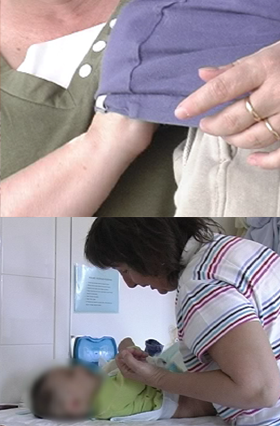|
Topic Introduction A: Task and relations work
Children must learn from you how to make bonds with caregivers, feel attached to them, how to do things and how to interact with others.
They learn from the way you manage the relations work how to become a social person.
In this sense, you as a professional is the most important person in the life of the child placed outside its family.
They do not have their parents as teachers, so they must rely on their foster parents for learning. What they should have learned from their parents, they must now learn from you.
This is sometimes a burden of responsibility, but also a gift: when you succeed, you have given the child a secure base: a positive foundation for life.
Doing this in practice is not easy if you are responsible for the care of many children, so let us look at the task:
When you work with children, you always work with two different tasks. You do a lot of practical things: make activities with the children, put on clothes, put them to bed, wash them, change diapers, etc. This is necessary for fulfilling the needs of the child (food, sleep, activities) and for making a natural rhythm of activities during the day. While you do all this, you also practice working with the relation: while you put on clothes, you also talk to the child, respond to the child, get the attention of the child, smile and caress the child and so on. This is necessary for making the child feel secure, for promoting attachment, and for social and emotional education in general. |
 |
It is always difficult to balance task and relation. Let us look at these videos demonstrating three different ways of balancing Task and Relations work. In all three examples the task is the same, but the ways in which the caregiver relates with the child are different
|
|
|
|
|
| This woman focuses on the task – she does not relate much while changing the diaper. So she is quickly finished and she can go on to the next child, but the child did not learn anything about how to relate to others. |
|
This woman is also changing a diaper – but at the same time she also talks much to the baby, and she tries to get the child’s attention. So, she is able to balance task and relation – she finishes the task in a reasonable time and also stimulates the child. |
|
This woman focuses only on the relation, and she almost forgets that she has a task to do. On the other hand, this child learns a lot about concentration, feeling joy, human contact. So maybe she is the one who teaches the child most about how to be in a relation. |
QUESTIONS
|
- What is most important or necessary for you – how do you balance task and relations work in your foster care?
- How do you balance task and relation in your own family? How did your parents do this?
- Why do you have the balance you have in your foster care – is that because “I always do like this”, “I am very busy”?
- What are the daily problems in balancing task and relations work for you?
- How do you balance between “giving time and attention to one child” and “giving attention to all the children”? When you have many children, it is always difficult to decide how much attention to give to one child and how much to all children.
- What can you do to make as much relations work as possible while you are performing practical tasks?
|
CHECKLIST FOR UNDERSTANDING
• Why are professional caregivers the most important people in the life of orphan children?
• What is important when you focus on task work?
• What is important when you focus on relations work?
• What is difficult in doing both at the same time? |
See “Things we can do now” if you want some activity suggestions before Topic Introduction B
Observe and write, or use your mobile or a camera to record: how you work with daily practical tasks. See the video and discuss how you can relate to the children while you do the practical work. Notice and discuss how you may sometimes find practical work most important, and how you sometimes find relations work most important in various situations during the day. |
“I don’t make any choice between dealing with children and performing a task anymore. At this session, I learned to do both of them at the same time. I’m relaxed and my child has fun, too. In this way, I can play games with them and they can hug me. In this way, they know that I would be with them whatever happens.”
Staff member’s statement

 English
English






